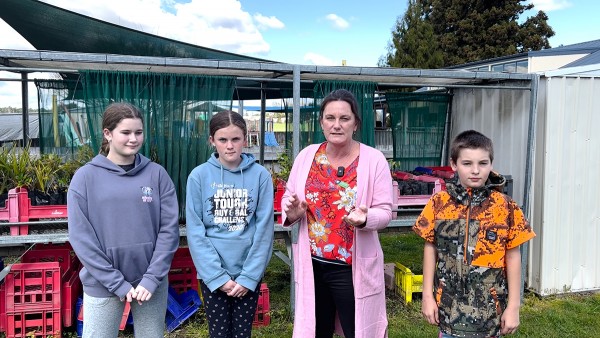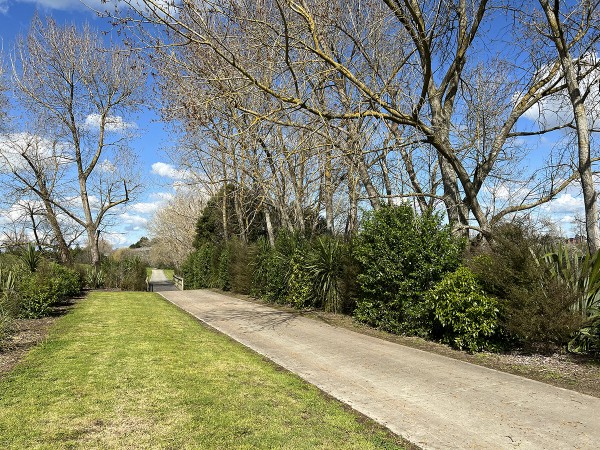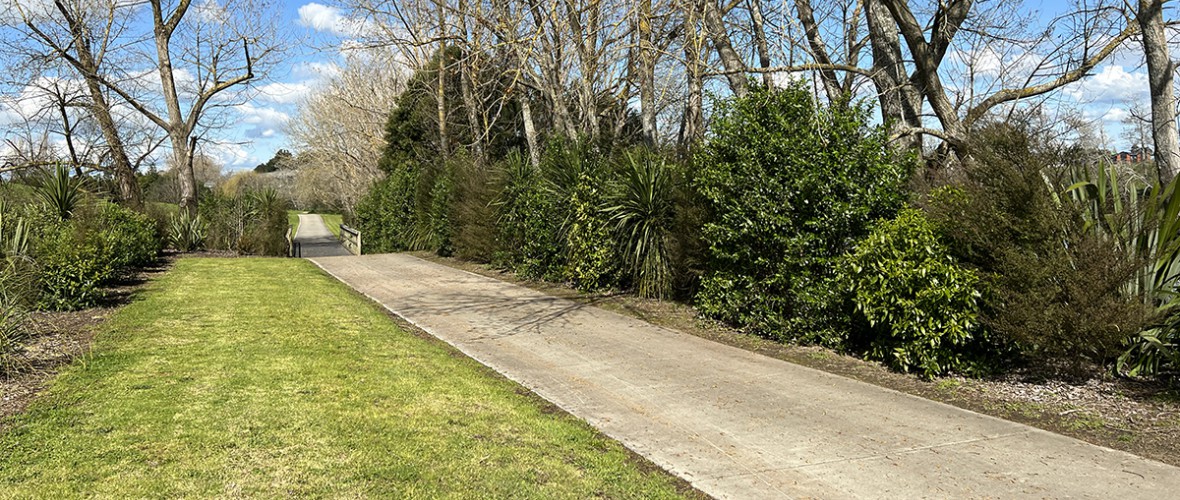In 2008, the Te Awa River Ride Charitable Trust was formed with a vision of making more of the Waikato River accessible to cyclists and walkers via a cycleway between Ngāruawahia and Karapiro. The first section of the now 65km trail was opened in 2009, with further sections being opened as funds allowed.

Horotiu School Deputy Principal, Karen Purdy with students (from left) Aria-Lee Smith, Abbie Parker and Kalarni Templeton.
A new generation of ideas
“At the time, we had established a plant growing unit at the school with the help of Trees for Survival, so we were already growing plants and had more than we needed for our own space,” says Horotiu School Deputy Principal, Karen Purdy.
“That’s when some of the kids came up with the idea for the planting project and, working with Waikato District Council, came up with a 10-year planting plan where they do a little bit more each year. And now, five years in, they've planted some 8000 plants along the awa, which is really cool because each time we carry out the next part of the plan, we walk past the ones that we planted the year before and can see how each of them has grown over the years.”

An ongoing project since 2008, the 65km-long Te Awa Cycleway links Ngaaruawahia and Karapiro, giving cyclists and walkers greater access to the Waikato River.
This year, volunteers from Citycare Property’s open spaces maintenance team helped with the preparation and mulching of the next site prior to planting and were also on hand on the day to help transport 1500 seedlings from the school to the site — along with further volunteers from NZ Police, Waikato District Council and Cushman Wakefield.
Once the planting was done, students and volunteers alike enjoyed a bbq and other refreshments supplied by the volunteer organisations.

Following their planting plan, over the past five years students from Horotiu School, along with volunteers from local organisations, have planted around 8000 native plants along a 2.5km-stretch of the cycleway.
Communities caring for the environment
A mix of native plants — mahoe, karamu, harakeke, kawakawa, ti kouka, kanuka and manuka — are being raised and planted by the students to improve biodiversity along the awa and to provide valuable habitat for birds and other animals.
“It’s a really great native restoration initiative, even more so for the fact that it was the kids who came up with the idea,” says Waikato Branch Manager, Kim Wood. “Citycare Property will definitely continue to be involved, lending expertise in the area of site preparation, as well as providing some hard graft on planting day.”
